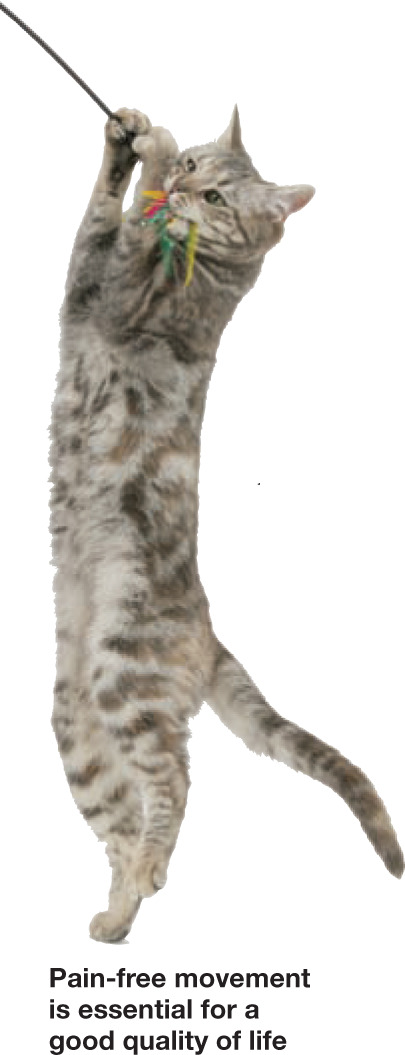Signs of lameness in cats are often very subtle – perhaps because, despite domestication, cats retain much of their original telos (‘cat’ness).
Lameness is defined as a ‘disorder of movement’, and absence of lameness – the ability to move in a normal and pain-free manner – is essential for a good quality of life.
Cats present less commonly than dogs with lameness, and tend not to show overt clinical signs. This is perhaps because, despite domestication, cats retain more of their original telos (‘cat’ness), and it is in their nature to hide weakness or injury, as would a wild animal. Signs of lameness in cats are therefore often very subtle. Given also that they cannot easily be walked on a lead, made to sit, stand, lie down, or otherwise encouraged to cooperate, cats (as we all well know) can be challenging patients! Add all this together and the diagnosis of neuromusculoskeletal disease in cats can be difficult, and a thorough, methodical (and often time-consuming) examination is vital.
The difficulties are perhaps compounded by the fact that there is a relative lack of information on neuromusculoskeletal diseases in cats. A recent search of ‘orthopaedics’ in the JFMS archive returned 47 articles, and ‘musculoskeletal’ just 28 articles. It, therefore, seemed timely to produce a special issue devoted solely to feline lameness.
Each review in this special issue, which covers lameness in cats arising from musculoskeletal and neurological diseases, is written by colleagues with expertise in the topic. The information is presented in a straightforward manner, to enable logical differential lists to be developed and refined for cats presenting with lameness.
In the introductory article, Sharon Kerwin describes how to methodically assess the musculoskeletal system in the cat, and offers practical tips for successfully completing the examination in our less cooperative patients. Paul Mahoney has produced a beautifully illustrated guide to feline musculoskeletal imaging, while, in a review of joint-specific diseases, James Grierson compares and contrasts common diseases of the hip, stifle and elbow of cats and dogs. David Bennett and colleagues from Glasgow present a comprehensive summary of current information on feline osteoarthritis, a condition that, until recently, has largely gone unrecognised. In a similar fashion, Jenny Helm and Jo Morris discuss the management and prognosis of the common neoplastic diseases of the feline musculoskeletal system. Rising admirably to the challenge, Sorrel Langley-Hobbs has provided a guide to the more unusual feline musculoskeletal conditions. My own task has been to produce a practical step-by-step guide to managing complex and open fractures, and the issue is rounded off by Laurent Garosi, who reminds us of the need to perform a neurological examination of all cats with movement disorders.
We all hope that you will enjoy this special issue, and will find some useful tips to improve your success in diagnosing and treating lameness in our wonderful feline patients.

Sandra Corr BVMS CertSAS FHEA DipECVS PhD MRCVS, European Specialist in Small Animal Surgery, Guest editor JFMS
Reader in Veterinary Surgery, School of Veterinary Medicine and Science, University of Nottingham, UK


